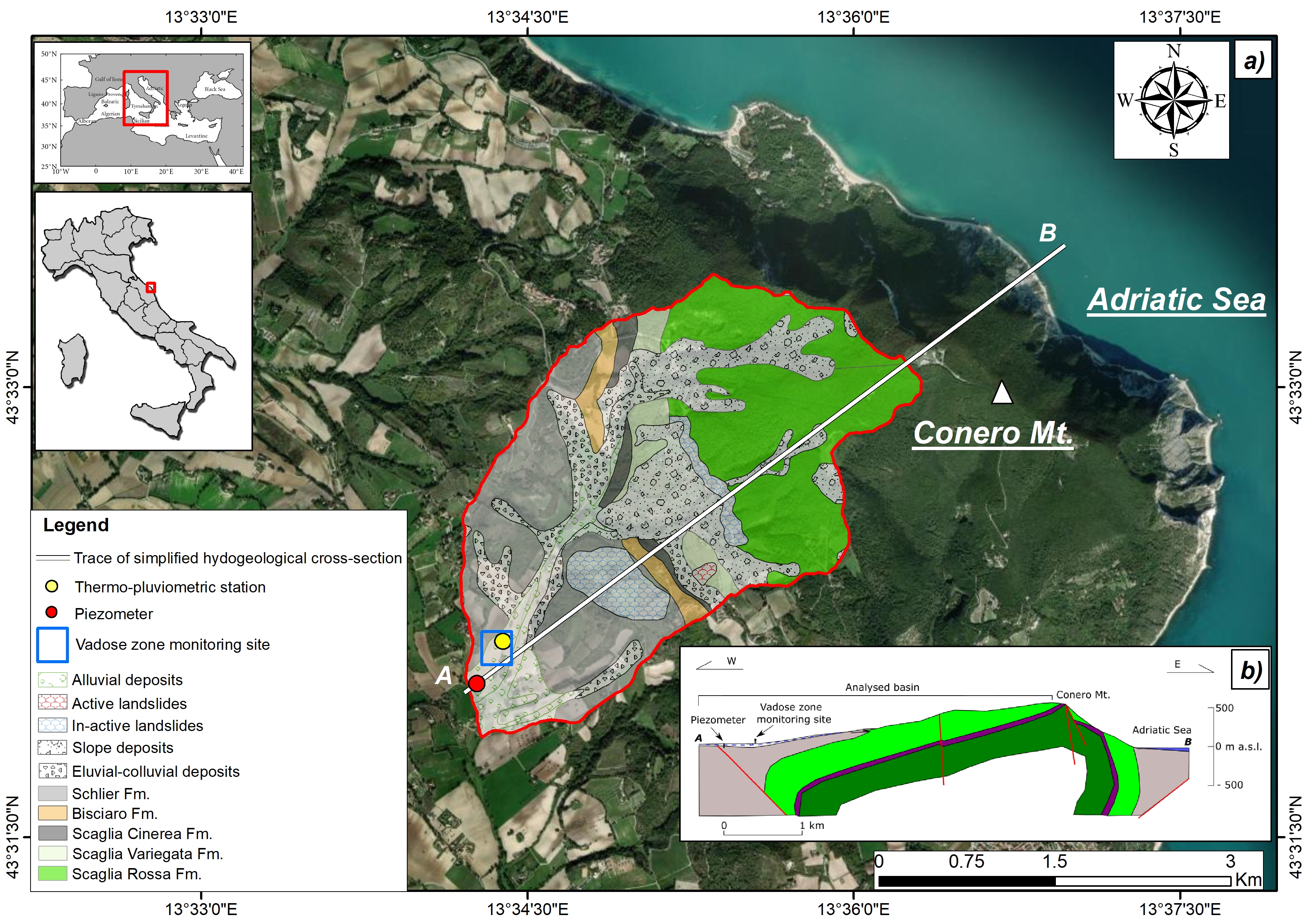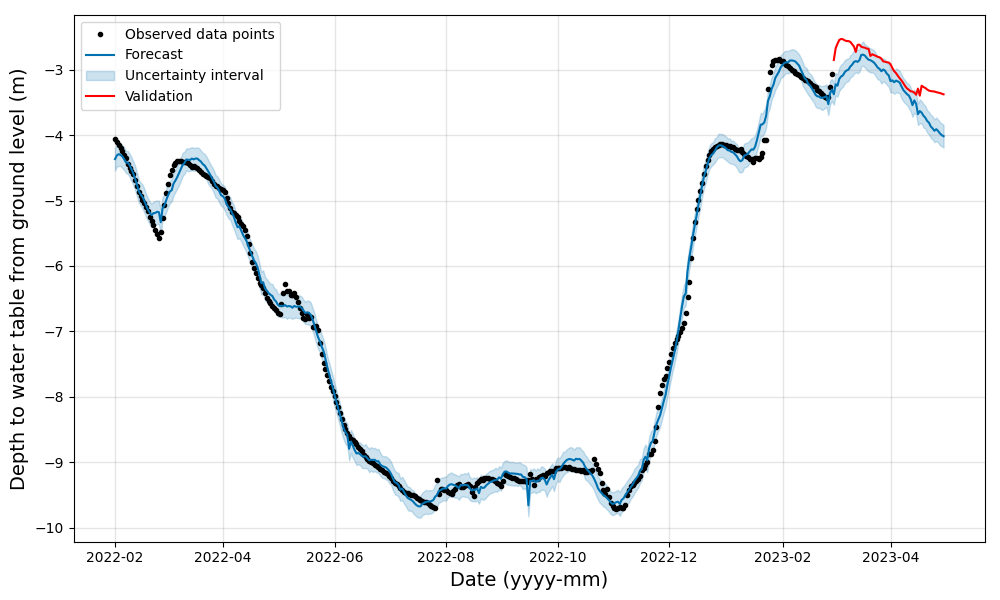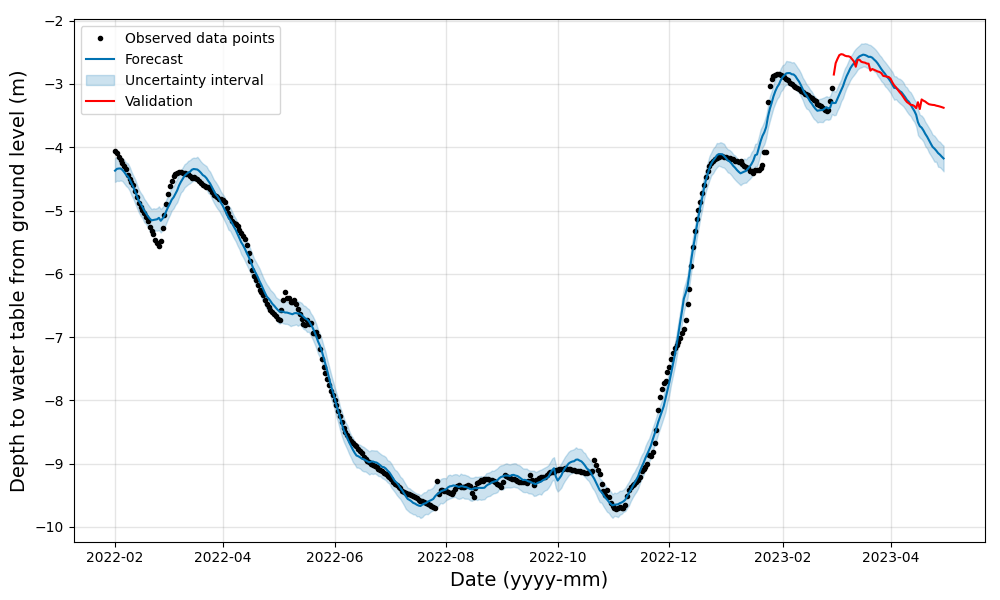High-resolution hydrogeological forecasting framework
Towards Groundwater-Level Prediction Using Prophet Forecasting Method by Exploiting a High-Resolution Hydrogeological Monitoring System
This project presents a scalable and data-driven groundwater monitoring and forecasting framework. It leverages a high-resolution hydrogeological sensing infrastructure to collect real-time measurements from groundwater wells and applies Prophet, a decomposable time-series model by Facebook, for short-term level prediction.
The work, published in the journal Water (Fronzi et al., 2024), is a critical contribution to addressing groundwater sustainability challenges, especially in regions facing increasing demand, irregular recharge patterns, and climate-induced anomalies. Our work was also selected among the Editor’s choice of papers.
Introduction
Forecasting of water availability has become of increasing interest in recent decades, especially due to growing human pressure and climate change, affecting groundwater resources towards a perceivable depletion. Numerous research papers developed at various spatial scales successfully investigated daily or seasonal groundwater level prediction starting from measured meteorological data (i.e., precipitation and temperature) and observed groundwater levels, by exploiting data-driven approaches. Barely a few research combine the meteorological variables and groundwater level data with unsaturated zone monitored variables (i.e., soil water content, soil temperature, and bulk electric conductivity), and—in most of these—the vadose zone is monitored only at a single depth. Our approach exploits a high spatial-temporal resolution hydrogeological monitoring system developed in the Conero Mt. Regional Park (central Italy) to predict groundwater level trends of a shallow aquifer exploited for drinking purposes. The field equipment consists of a thermo-pluviometric station, three volumetric water content, electric conductivity, and soil temperature probes in the vadose zone at 0.6 m, 0.9 m, and 1.7 m, respectively, and a piezometer instrumented with a permanent water-level probe. The monitored period started in January 2022, and the variables were recorded every fifteen minutes for more than one hydrologic year, except the groundwater level which was recorded on a daily scale. The developed model consists of three “virtual boxes” (i.e., atmosphere, unsaturated zone, and saturated zone) for which the hydrological variables characterizing each box were integrated into a time series forecasting model based on Prophet developed in the Python environment. Each measured parameter was tested for its influence on groundwater level prediction. The model was fine-tuned to an acceptable prediction (roughly 20% ahead of the monitored period). The quantitative analysis reveals that optimal results are achieved by expoiting the hydrological variables collected in the vadose zone at a depth of 1.7 m below ground level, with a Mean Absolute Error (MAE) of 0.189, a Mean Absolute Percentage Error (MAPE) of 0.062, a Root Mean Square Error (RMSE) of 0.244, and a Correlation coefficient of 0.923. This study stresses the importance of calibrating groundwater level prediction methods by exploring the hydrologic variables of the vadose zone in conjunction with those of the saturated zone and meteorological data, thus emphasizing the role of hydrologic time series forecasting as a challenging but vital aspect of optimizing groundwater management.

Context and Motivation
Groundwater resources are essential for agriculture, drinking water, and industry, but are under constant threat due to overexploitation and lack of fine-grained monitoring. In the Marche region of Italy, an advanced monitoring infrastructure—part of the GORGOVIVO 4.0 project—was deployed to collect high-frequency water-level data across multiple wells using electronic probes and IoT communication protocols.
Despite the availability of such data, traditional forecasting methods were either too static or lacked adaptability. This study integrates automated forecasting with interpretable machine learning, giving water managers a proactive decision-support tool.
Technical Approach
The forecasting model uses Prophet, which decomposes groundwater time series into:
- Trend: long-term non-periodic changes
- Seasonality: daily and annual water consumption and recharge cycles
- Holiday effects: captures anomalous patterns (e.g., post-rainfall recharge)
The model was applied to four years of historical data (2019–2022) for wells in the Gorgovivo system. Sensor data is transmitted using LoRaWAN and NB-IoT, with cloud-based data ingestion and visualization.
After hyperparameter tuning and pre-processing (e.g., handling gaps, outlier correction), Prophet provided 7-day forecasts with uncertainty intervals.

Results and Contributions
- Achieved low RMSE and high interpretability, even with noisy environmental data.
- Demonstrated robustness to sudden recharge or depletion events.
- Supports scalable deployment across multiple wells due to minimal model-specific customization.
- Offered a visual dashboard for prediction interpretation by stakeholders.
This work bridges the gap between smart sensing infrastructures and automated forecasting, providing a low-cost, reproducible solution to regional water authorities.




Summary
The project illustrates how low-cost sensors, high-frequency data, and advanced forecasting models can form an intelligent groundwater management pipeline. This contribution is not just technical but supports sustainable water governance, particularly for regions with dense agricultural and urban water demands.
Related Publication
References
2024
- Towards groundwater-level prediction using prophet forecasting method by exploiting a high-resolution hydrogeological monitoring systemWater, 2024